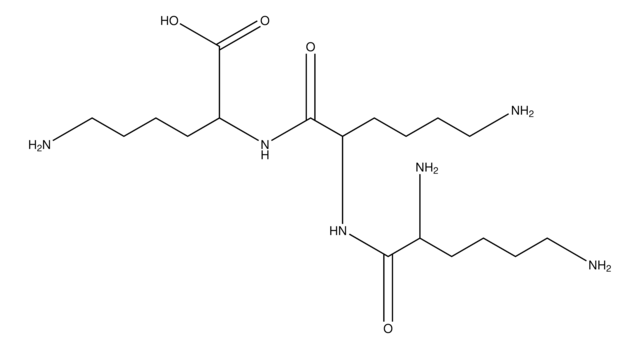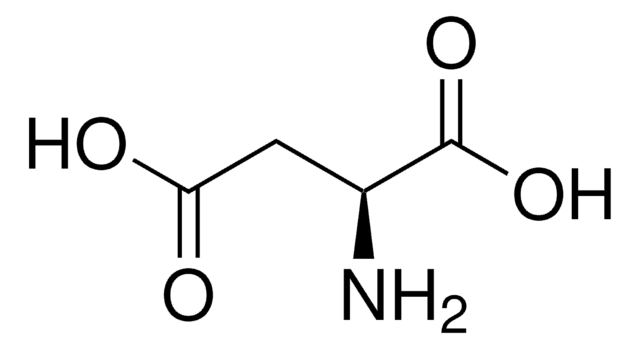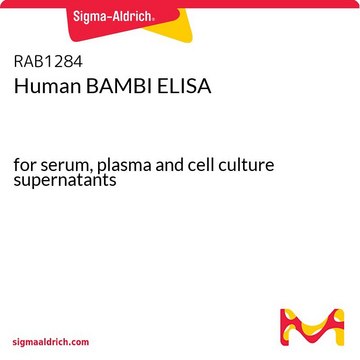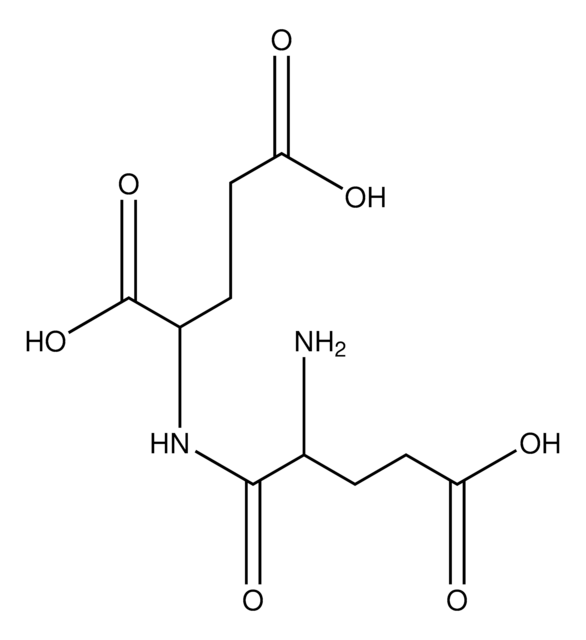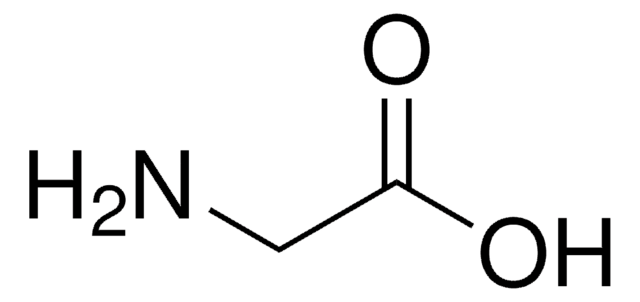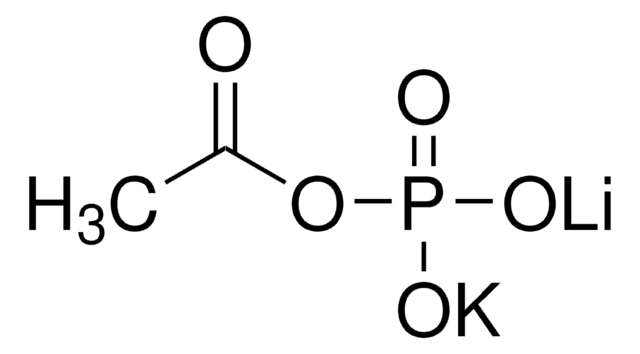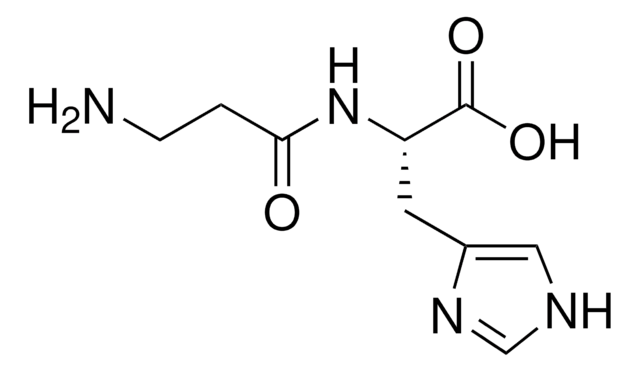All Photos(1)
About This Item
Empirical Formula (Hill Notation):
C16H22N4O13
CAS Number:
Molecular Weight:
478.36
MDL number:
UNSPSC Code:
12352200
PubChem Substance ID:
Recommended Products
Assay
≥97% (TLC)
form
powder
color
white
storage temp.
−20°C
SMILES string
NC(CC(O)=O)C(=O)NC(CC(O)=O)C(=O)NC(CC(O)=O)C(=O)NC(CC(O)=O)C(O)=O
InChI
1S/C16H22N4O13/c17-5(1-9(21)22)13(29)18-6(2-10(23)24)14(30)19-7(3-11(25)26)15(31)20-8(16(32)33)4-12(27)28/h5-8H,1-4,17H2,(H,18,29)(H,19,30)(H,20,31)(H,21,22)(H,23,24)(H,25,26)(H,27,28)(H,32,33)
InChI key
OZRFYUJEXYKQDV-UHFFFAOYSA-N
Amino Acid Sequence
Asp-Asp-Asp-Asp
Biochem/physiol Actions
Tetraaspartic acid (Asp-Asp-Asp-Asp) is a small polyanionic peptide used in physicochemical studies along with other polyanionic peptides. Tetraaspartic acid forms complexes with metals such as copper making it useful in studies on copper mediated effects such as free radial formation.
Storage Class Code
11 - Combustible Solids
WGK
WGK 3
Flash Point(F)
Not applicable
Flash Point(C)
Not applicable
Personal Protective Equipment
dust mask type N95 (US), Eyeshields, Gloves
Choose from one of the most recent versions:
Already Own This Product?
Find documentation for the products that you have recently purchased in the Document Library.
Csilla Kállay et al.
Journal of inorganic biochemistry, 99(7), 1514-1525 (2005-06-02)
Copper(II) complexes of di-, tri- and tetra-peptides built up from Asp and/or Glu residues were studied by potentiometric and various spectroscopic techniques including UV-visible, circular dichroism and electron paramagnetic resonance measurements. The ligands contain two to five carboxylate functions and
Xiaofei Li et al.
Biotechnology for biofuels, 6(1), 94-94 (2013-07-04)
Plant cell wall polysaccharide composition varies substantially between species, organs and genotypes. Knowledge of the structure and composition of these polysaccharides, accompanied by a suite of well characterised glycosyl hydrolases will be important for the success of lignocellulosic biofuels. Current
Our team of scientists has experience in all areas of research including Life Science, Material Science, Chemical Synthesis, Chromatography, Analytical and many others.
Contact Technical Service